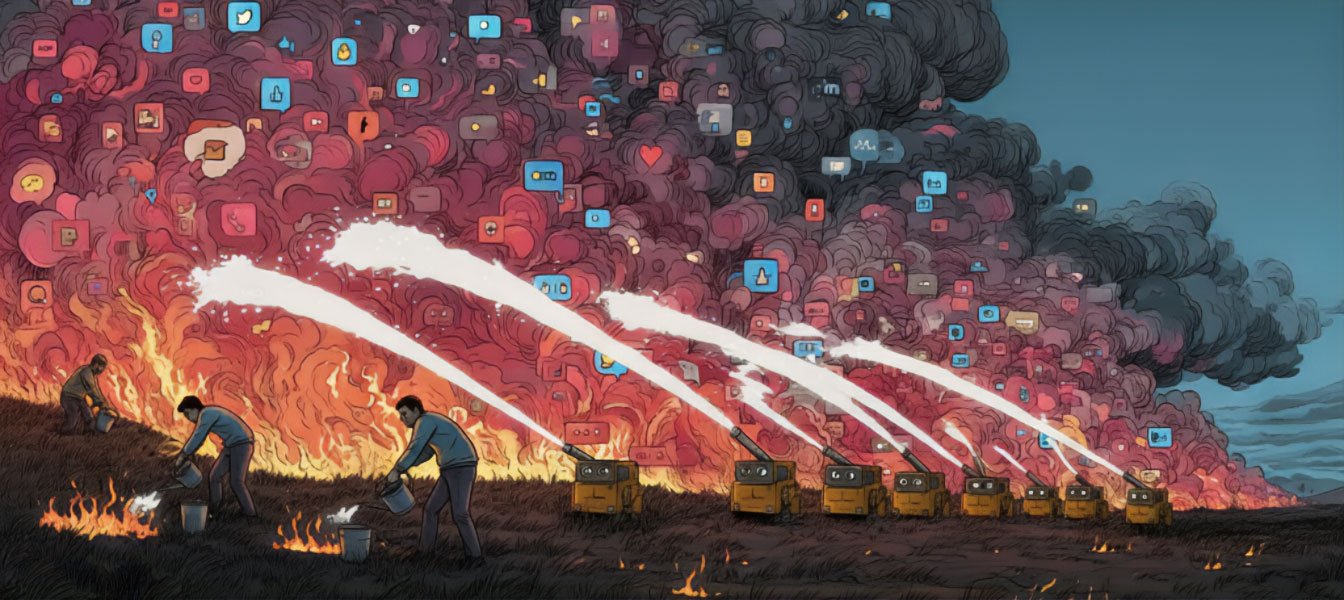Online communities face enormous pressure to keep harmful content under control. Players and users generate messages, posts, and streams at a scale that humans alone cannot manage. Regulators and users alike increasingly expect platforms to act quickly, with real time detection and enforcement now seen as best practice.
The challenge is that going all in on automation often creates mistakes and unfair outcomes, while relying only on human moderators leads to delays, high costs, and burnout. To solve this, platforms are moving toward layered systems that mix automation with human oversight. At Aiba, we have shaped this into a clear three layered model: fast where it can be, human where it must be.
The Challenge with Moderation Today
The scale is overwhelming. Every minute, users post millions of messages and upload hours of video on platforms across the internet. No human team can realistically review content at that speed or volume.
At the same time, communities are creative. Players often use “algospeak,” invented words or symbols designed to bypass simple filters. A word like “seggs” might look harmless to a machine, but to a person its meaning is obvious.
And then there is the human cost. Trust and Safety teams spend hours every day exposed to the worst of the internet. Studies have shown long term emotional strain for moderators who constantly review violent, abusive, or explicit material. Any modern approach to safety needs to protect communities and the people working to keep them safe.
The Three Layered Approach
At Aiba, we believe moderation works best when it is built like a funnel, with each layer taking on the work it is best suited for.

Layer 1: Real Time Filter
This layer blocks the most obvious harmful content before it ever reaches players. Speed matters. For example, many streaming platforms now deploy real-time AI scanning to filter out offensive chants, trolling, and disruptive behavior as the action unfolds—protecting viewer experience and keeping broadcasts safe and compliant at the same time.
Layer 2: Automated Sanctions
The second layer deals with the bulk of routine violations. It applies consistent sanctions automatically, so moderators do not need to spend their days repeating the same actions. This layer handles the most common incidents, allowing the human team to focus on the cases that really need attention.
Layer 3: Human in the Loop
The final layer brings people back in. When cases are nuanced, sensitive, or depend on cultural context, human moderators step in. They review conversation history, player behavior, and intent. This makes sure decisions are fair, explainable, and aligned with community values.
The Balance Works
This balance solves problems that neither humans nor machines can handle alone:
Research on hybrid systems shows they consistently deliver more accurate and trusted outcomes compared to approaches that rely only on automation or only on human teams (arXiv).
Business and Community Impact

For platforms, this approach is not only about safety—it is also about growth. Safer communities mean players stay longer. A survey from TELUS International found that trust in a platform can collapse after only two or three toxic experiences. Communities that feel safe and fairly treated see stronger engagement and lower churn (Businesswire)
Looking Ahead
The future of moderation will be defined by balance. As digital worlds evolve into immersive spaces like the metaverse, moderation will need to go beyond spotting obvious harms. It will need to understand subtle cues, context, and human emotion. Companies that adopt a layered model now will be best prepared. They will scale safely, reduce costs, and build communities where people want to stay.
Moderation needs to be fast where it can be, human where it must be. Real time filters stop the worst, automated sanctions resolve the routine, and humans handle the rest. This is a model that saves money, protects players, and builds trust.


